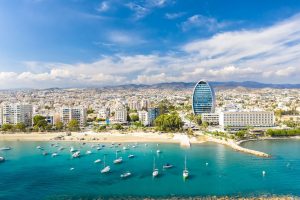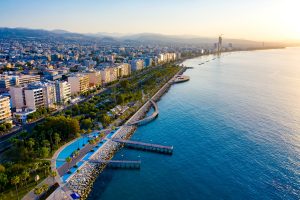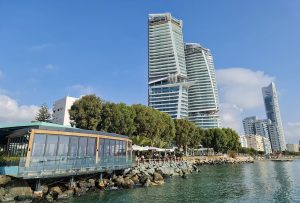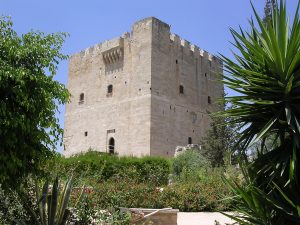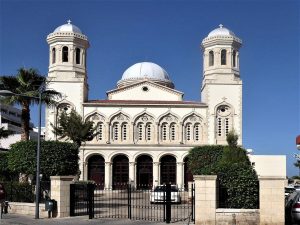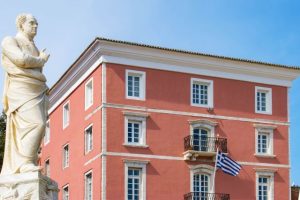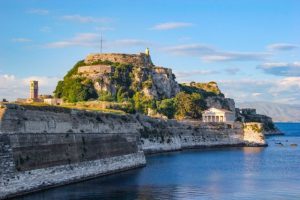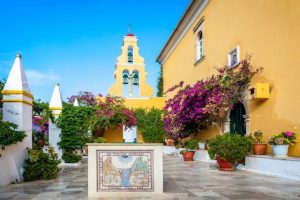About Cyprus
About Cyprus
TBA
Cyprus, officially the Republic of Cyprus, is an island country in the eastern Mediterranean Sea. It is geographically a part of West Asia, but its cultural ties and geopolitics are overwhelmingly Southeast European. Cyprus is also a part of the Middle East and the Levant. Cyprus is the third largest and third-most populous island in the Mediterranean. Its capital and largest city is Nicosia. The northeast portion of the island is de facto governed by the self-declared Turkish Republic of Northern Cyprus.
Cyprus was first settled by hunter-gatherers around 13,000 years ago, with farming settlements emerging a few thousand years later. During the late Bronze Age, Cyprus, known in contemporary sources as Alashiya, developed an urbanized society closely connected to the wider Mediterranean world. Cyprus experienced waves of settlement by Mycenaean Greeks at the end of the 2nd millennium BC. It was subsequently occupied by several major powers, including the empires of the Assyrians, Egyptians and Persians, from whom the island was seized in 333 BC by Alexander the Great. Subsequent rule by Ptolemaic Egypt, the Classical and Eastern Roman Empire, Arab caliphates for a short period, the French Lusignan dynasty and the Venetians was followed by over three centuries of Ottoman rule between 1571 and 1878. Cyprus was placed under the United Kingdom’s administration based on the Cyprus Convention in 1878 and was formally annexed by the UK in 1914.
Cyprus is a major tourist destination in the Mediterranean. The country has an advanced high-income economy. The Republic of Cyprus has been a member of the Commonwealth since 1961 and was a founding member of the Non-Aligned Movement until it joined the European Union on 1 May 2004. On 1 January 2008, Cyprus joined the eurozone.
Limassol or Lemesos, is the second-largest city in Cyprus and the southmost in Europe. It is the largest city in geographical size, and Limassol municipality is the largest and most populous of the island. The city is located on Akrotiri Bay, on the island’s southern coast and it is the capital of Limassol District, which has a population of 235,000. Limassol is one of the busiest ports Mediterranean transit trade and the largest port in Cyprus. It has also become one of the most important tourism, trade and service-providing centres in the area. Limassol is renowned for its long cultural tradition, and is home to the Cyprus University of Technology. A wide spectrum of activities and a number of museums and archaeological sites are available to the interested visitor.
Consequently, Limassol attracts a wide range of tourists mostly during an extended summer season to be accommodated in a wide range of hotels and apartments. A large marina is currently being constructed near the old town. Limassol was built between two ancient cities, Amathus and Kourion and during Byzantine rule it was known as Neapolis (new town). Limassol’s historical centre is located around its Medieval Castle and the Old Port. Today the city spreads along the Mediterranean coast and has extended much farther than the Castle and Port, with its suburbs stretching along the coast to Amathus.
For more details about exploring Cyprus and Limassol furthermore, you can guide through the following options:
In parallel, the British began to occupy the Ionian Islands and reached Corfu in 1815, which they dominated. The period of English rule was a prosperous period for Corfu because the Greek language became official, new roads were built, the water supply system was improved and the first Greek University was founded in 1824. Although Corfu was never under the control of the Turks, its inhabitants helped the rest of Greece financially during the Greek Revolution. On the 21st of May, 1864, the Ionian Islands were donated by the British to the new King of Greece, George I, annexed to the modern Greek state and have been an official part of it ever since.
In the 20th century, Corfu took part in the two World Wars and suffered great damage. In fact, the Ionian Academy, the Public Library and the Municipal Theatre were burnt and totally destroyed by German bombing in 1943 but they were then restored.
The island had a hard time during the first half of the century, yet the locals managed to exploit the excellent climate and fertile land and give impetus to the economic development of their place.
